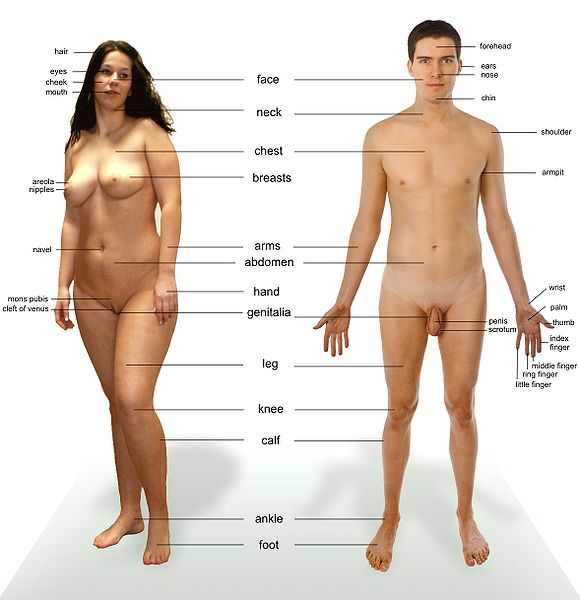Vaginal lubrication: Difference between revisions
No edit summary |
m (Text replacement - "{{cat1|" to "{{cat|") |
||
| Line 27: | Line 27: | ||
{{rha}} | {{rha}} | ||
{{footer}}{{Needs}} | {{footer}}{{Needs}} | ||
{{ | {{cat|Health}} | ||
Revision as of 07:31, 27 June 2022
Vaginal lubrication is a lubricating fluid that is naturally produced in a woman's vagina. Vaginal lubrication or moistness is present at all times, but production increases significantly during a woman's sexual arousal in anticipation of sexual intercourse. Without vaginal lubrication, sexual intercourse would be painful to the woman, and sometimes artificial lubricants need to be used to augment insufficient natural lubrication. While plasma seepage from vaginal walls due to vascular engorgement is considered to be the chief lubrication source, the Bartholin's glands, located slightly below and to the left and right of the introitus (opening of the vagina), also secrete mucus augment vaginal-wall secretions. Vaginal dryness is the condition in which this lubrication is insufficient.
The lubrication fluid contains water, pyridine, squalene, urea, acetic acid, lactic acid, complex alcohols and glycols, ketones, and aldehydes. The fluid is typically clear and more resembling of male pre-ejaculate than male ejaculate. It can vary in consistency, texture, taste, color, and odor, depending on sexual arousal, the phase of the menstrual cycle, the presence of an infection, certain drugs (legal or illegal), genetic factors, and diet.
Vaginal fluid is slightly acidic and can become more acidic with certain sexually transmitted diseases. The normal pH of vaginal fluid is between 3.8 and 4.5, whereas male semen is typically between 7.2 and 8.0 (a neutral substance has a pH of 7.0)
Vaginal dryness
Insufficient lubrication or vaginal dryness in women can cause dyspareunia, which is a type of sexual pain disorder. While vaginal dryness is considered an indicator for sexual arousal disorder, male circumcision exacerbates female vaginal dryness during intercourse. Vaginal dryness may also result from insufficient excitement and stimulation or from hormonal changes caused by menopause, pregnancy, or breast-feeding. Irritation from contraceptive creams and foams can also cause dryness, as can fear and anxiety about sex.
Certain medications, including some over-the-counter antihistamines, as well as life events such as pregnancy, lactation, menopause, aging or diseases such as diabetes, will inhibit lubrication. Medicines with anticholinergic (An anticholinergic agent is a substance that blocks the neurotransmitter acetylcholine in the central and the peripheral nervous system. An example of an anticholinergic is dicycloverine, and the classic example is atropine) or sympathomimetic effects will dry out the mucosal or "wet" tissues of the vagina. Such medicines include many common drugs for allergic, cardiovascular, psychiatric, and other medical conditions. Oral contraceptives may also increase or decrease vaginal lubrication.
Older women produce less vaginal lubrication and reduced estrogen levels may be associated with increased vaginal dryness.
Artificial lubricants
 Main article: Personal lubricant
Main article: Personal lubricant
When a woman is experiencing vaginal dryness before sexual activity, during which she produces insufficient vaginal lubrication, sexual intercourse may be uncomfortable or painful for her. A personal lubricant can be applied to the vaginal opening and/or the penis to augment the naturally produced lubrication and prevent or reduce the discomfort or pain. More rarely, a vaginal suppository may be inserted prior to sexual intercourse].
Oil-based lubricants can weaken latex and reduce the effectiveness of condoms, latex[ gloves, or dental dams as either forms of birth control or for protection from sexually transmitted diseases, so water- or silicone-based lubricants are often used instead.
The use of an artificial lubricant can make sexual intercourse less painful for a woman, but does not address the underlying cause of the vaginal dryness itself.
Dry sex
 Main article: Dry sex
Main article: Dry sex
Some women practice dry sex. This involves the woman having sexual intercourse after removing vaginal lubrication in some way. The concept of the practice is that a dry vagina makes the vagina tight, supposedly to increase sexual pleasure for the man. However, besides making sex very painful for the woman, the practice is believed to increase the risks of transmitting sexually transmitted diseases (STDs) for both partners, including HIV. For example, the risk of HIV transmission is increased by lacerations in the tissue of the vagina resulting from the lack of lubrication. The practice is common in sub-Saharan Africa.
These photos are presented for the purposes of identifying various body parts
| Images of Human Body |
|---|
Chat rooms • What links here • Copyright info • Contact information • Category:Root
